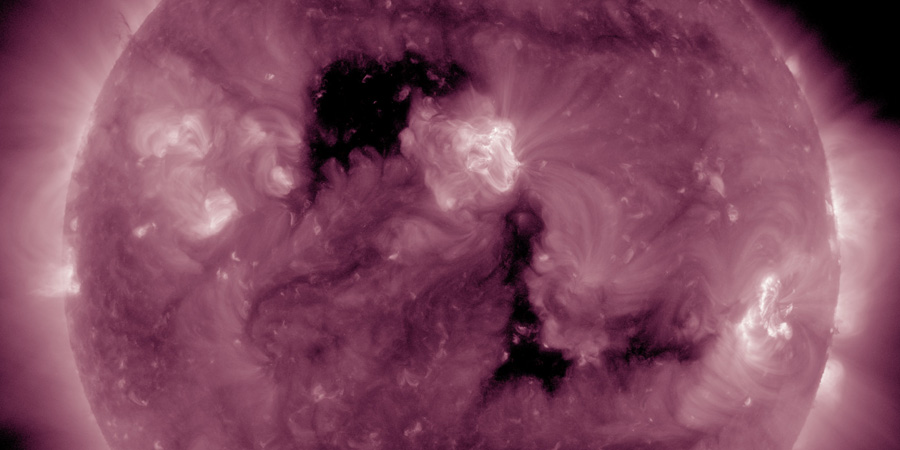Two small coronal holes faces Earth
Tuesday, 24 May 2016 18:10 UTC

Solar activity remains at low levels as we only have one numbered sunspot region on the Earth-facing solar disk. Most of the geomagnetic activity at Earth thus has to come from coronal holes and today we have yet another coronal hole facing our planet.
A coronal hole is facing Earth. Enhanced solar wind could arrive in ~3 days - Follow live on https://t.co/T1Jkf6i4Cb pic.twitter.com/i08FuvuHtA
— SpaceWeatherLive (@_SpaceWeather_) 24 mei 2016
It's actually not one, but two smaller coronal holes that face Earth. We should start to feel the effects of their coronal hole solar wind streams in about 2 to 3 days from and a Kp of 4 (active geomagnetic conditions) can be expected. Sky watchers in Tasmania (Australia) and perhaps around the US-Canadian border should be alert for aurora when the solar wind stream arrives.
Thank you for reading this article! Did you have any trouble with the technical terms used in this article? Our help section is the place to be where you can find in-depth articles, a FAQ and a list with common abbreviations. Still puzzled? Just post on our forum where we will help you the best we can!
Latest news
Latest forum messages
Support SpaceWeatherLive.com!
A lot of people come to SpaceWeatherLive to follow the Sun's activity or if there is aurora to be seen, but with more traffic comes higher server costs. Consider a donation if you enjoy SpaceWeatherLive so we can keep the website online!

Space weather facts
| Last X-flare | 2025/03/28 | X1.1 |
| Last M-flare | 2025/04/01 | M5.6 |
| Last geomagnetic storm | 2025/03/27 | Kp5 (G1) |
| Spotless days | |
|---|---|
| Last spotless day | 2022/06/08 |
| Monthly mean Sunspot Number | |
|---|---|
| February 2025 | 154.6 +17.6 |
| Last 30 days | 128.5 -22.7 |


